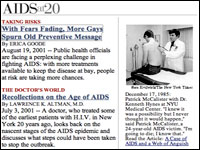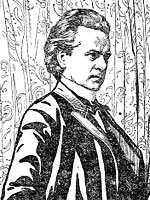1. Yellow Fever. Viral infection transmitted by mosquito bites. Symptoms include fever, pain, nausea, and jaundice induced by liver damage. It was brought to America via the Spanish slave trade through the Caribbean to New Orleans. Epidemics began in 1693, and centered on port cities—especially, after 1822, in the South. An outbreak in 1878 in New Orleans was the last great U.S. epidemic, and a smaller outbreak in 1905 in New Orleans was the last of any magnitude.
2. Measles. Viral disease spread by coughing. Symptoms include fever, conjunctivitis, and a clustered, spotted rash. Endemic in Europe, where it was not ordinarily fatal because the population had a certain degree of resistance. When it made its debut in the Americas, however, where the Native Americans had never been exposed to it, it killed vast swaths of people.
3. Cholera. Bacterial disease transmitted through eating or drinking contaminated food or water. Symptoms develop rapidly and include diarrhea, a drop in blood pressure, and shock. The first epidemic in America happened in 1832, spread from Europe. Other outbreaks continued through the 19th century, such as one spread by gold seekers to California between 1849 through 1855. The last U.S. outbreak happened in New York City in 1910.
4. Typhus. Bacterial disease transmitted from one infected person to another by lice bites. Symptoms include headache, fever, rash, chills, sores, and delirium. Epidemics have typically occurred during times of war and famine, or in widespread unsanitary living conditions, such as those in prisons or camps. In 19th-century America, epidemics of this disease occurred in 1837 in Philadelphia, in various encampments in the Civil War, and in Baltimore, Memphis, and Washington, in the decade after the war.
5. HIV/AIDS. Viral disease that originated in Africa early in the 20th century, but which was not recognized until it became epidemic in the United States early in the 1980s. It is transmitted through contact with an infected person's bodily fluids. The disease weakens the body's immune system and thereby makes it susceptible to infection by other diseases. In the United States, about 1.7 million people have been infected with this disease, and more than 580,000 have died.
6. Influenza. Viral disease that becomes epidemic when new strains are spread from animals, such as birds or pigs, to humans. A pandemic in 1918-1919 killed over 50 million people worldwide, most of them healthy young adults, probably because of overreaction by strong immune systems. In the U.S., over 500,000 died—more than the number of American fatalities in World War I, which occurred at the same time. In many U.S. cities, business came to a halt during the height of the epidemic.

 For all things illness, check out the
For all things illness, check out the 
